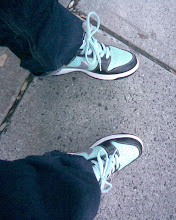I don't remember much about the summer that Mulan, Disney's 36th animated feature film, was released to theaters. Wikipedia (the most accurate source of information in the world, and my go-to facts checker) indicates that it must have been the summer of 1998, when I was 12 years old.
I remember that my family - dad, sister, me, and perhaps my mother - went to watch the film together in a small cineplex, during a summer vacation spent in Orlando, Florida, one of a small handful of favorite family destinations (along with Williamsburg, VA and the Poconos). Emerging from our dark A/C-cooled haven 87 minutes (plus previews) later, I charged out energetic and hyper - not an uncommon state for the 12-year-old me - and, naturally, my 9-year-old sister found that energy infectious.
That my younger self left a Disney movie with an excess of high spirits was little surprise, and I can't recall ever since sparing a second thought in analyzing that response. However, in light of my recent reflections on portrayals of Asian-Americans in popular media, plus a spate of personally-mandated viewings of selected minority filmmakers' works, I decided to take Mulan for a second spin, possibly (if memory serves) my first full viewing since that humid Florida midafternoon.
Watching the film, I'm struck by an uncanny déjà vu, as were I communing with my 12-year-old self. Of course, I'm quite the sophisticate now: at the time, I knew virtually nothing about China/中国 (now 2 summers' experience and frequent return trips), could speak no words of Mandarin/普通话 (8 semesters' study), had never studied kungfu/功夫 (6 years). But there is still something of the chubby, bookish 12-year-old Chinese-American boy in me that watches this film and marvels at it.
At the time, I had no lexicon with which to articulate my experience of the film, and so I relegated it to the same continuum as all other pop culture phenomena with which I had sated my indiscriminate whims: located at a point, indistinct, between my parents' collection of early-80s TIME/LIFE magazines (low interest, high availability) and my budding STAR WARS/Tolkien fanboyism (high interest, low pre-Internet re-release/film adaptation availability). I had no experience within which to locate the film's effect on me, simply because it was, at the time, pioneering for me: apart from the occasional visit from relatives, or yearly Christmas visits to the grandparents' in DC, my parents, sister, and I were the extent of Chinese America to me. Apart from a single hardcover volume describing contemporary (1995!) life in China (well-worn out of interest, with a rough red fabric cover under the dust jacket), for all I knew, we were the extent of Chinese.
Now, flicking through the half-familiar, hazily-remembered scenes of the film, I'm amazed by it on so many more levels*: the colors redolent of the Chinese countryside (glimpsed in my sojourns to 西安, 河北, 广东, and the like); a character sighing with the distinctly Eastern "Ai! /哎!" phoneme instead of the Western "Oh! / 哦"; the food portrayed - rice porridge (粥), Chinese noodles (面), still staples of Chinese food/中菜. And, most of all, the distinct, plastic framework of the Disney Fairytale (as opposed to a Fairy-story) fleshed out with Chinese faces and Asian voices: the Handsome Prince, instead of a wavy-locked blondie with light eyes, an almond-eyed, black-haired "Captain Shang"; the Model Father cast in a model not entirely unresembling my own paternal figure (albeit a far more svelte and, perhaps, picturesque figure).
I can only imagine the twofold impact on the psyche of young Asian-American girls: the dual revelation that a woman could be both Asian and, without renouncing her culture, a Disney Princess (the latter being, admittedly, a dubious and debatable distinction among gender critiques); and that her handsome prince could be an Asian male (yes, I know this statement can be problematized; humor me).
I am not now who I was then; but still, tonight's viewing of Mulan has reaffirmed for me - and this time, in a primarily affective manner - the importance of strongly positive portrayals of Asian-Americans (and, in general, minorities) in popular culture and the media. Eleven years after my first viewing of Mulan, watching this film still causes emotions to stir: the sight of Real Characters - not background characters, not secondary characters, not 2-dimensional jump-kicking, med-school-graduating, lab-coat-wearing ciphers - that look like my family and me? Astounding!
And how can it be that, in the intervening years, I have still not seen anything so well-produced, well-promoted, and ethnically true to itself (with little-to-no yellowface!)? If even Disney could get it right in the late 90s, how is it that another similar production has yet to surface? When the day comes - God help us - when I have a young daughter, or son, to what will I turn for aid when teaching my child to be proud and grateful for her, or his, features, family, and culture**?
*not least of which is that several members of the cast are related to one another through the network of the highly respected East West Players, the seminal Asian-American theater ensemble.
**I am aware of, and incredibly grateful for, the Ni Hao, Kai-Lan (你好,凯兰) series currently airing on Nickelodeon, a Chinese-American version of the similarly bicultural Dora the Explorer. I saw its content briefly at a friend's house, and was astounded at the extent of the multiethnic programming now available to her daughter, which I could neither have imagined nor hoped for as a youngster.
Friday, August 7, 2009
Reflection on Mulan (pun intended)
tags:
Asian America,
ethnic studies,
film,
race
Subscribe to:
Post Comments (Atom)


No comments:
Post a Comment